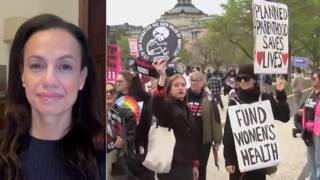
Topics
Today is the thirtieth anniversary of Roe v. Wade. On January 22, 1973, the Supreme Court legalized abortion by a vote of seven to two. State laws prohibiting abortion became instantly void.
Before the historic Supreme Court decision, abortion was illegal in almost every state. Poor and desperate women resorted to desperate measures. They used knitting needles or hangers to puncture the cervix. They douched with bleach. They turned to back-alley doctors, who performed hundreds of thousands of illegal abortions under unsanitary conditions. Unknown thousands of women died.
After the historic decision, states immediately began passing restrictive legislation. Congress passed the Hyde Amendment, which withholds federal Medicaid funding for abortions for poor women except to save a woman’s life. Some states passed laws requiring a husband’s consent, parental consent laws, and 24-hour waiting periods.
Today, 87% of counties have no abortion providers, according to the Alan Guttmacher institute.
Roe v. Wade itself hangs in the balance by 5-4 at the Supreme Court. President Bush has vowed to try to have it overturned. Thousands of abortion foes are protesting the historic decision in Washington today. And then there is the continual harassment of women outside clinics, and murders of health care workers in clinics and in their homes.
Tape:
- The sounds of harassment outside clinics and news footage of shootings of abortion providers, from “The Fragile Promise of Choice: Abortion in the United States Today,” a documentary directed by Dorothy Fadiman and produced by Beth Seltzer (1996).
Guests:
- Elizabeth Cavendish, legal director, NARAL Pro-Choice America.
- Olivia Gans, spokesperson for the National Right to Life Committee and director of American Victims of Abortion.
Related links:











Media Options